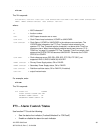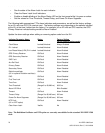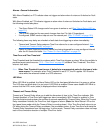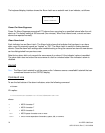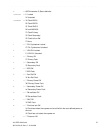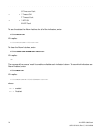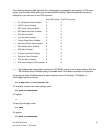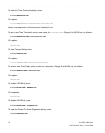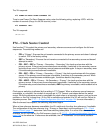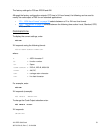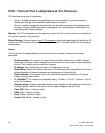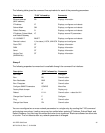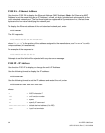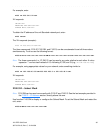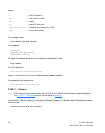
XLi IEEE 1588 Clock 77
997-01510-03, Rev. C, 12/12/2006
2
5
1
SSSSSSSSSSSS SSSSSSSSSS SSSSSSS S SSS S SSSSS S
The XLi responds:
F73 POWER-ON MINOR ALARM SUPPRESS 300
To set a new Power-On Alarm Suppress value, enter the following string, replacing <SEC> with the
number of seconds
(Range 0 to 86,400 seconds), enter:
F73 SUPPRESS <SEC>
The XLi responds:
OK<CR><LF>
F74 – Clock Source Control
Use function F74 to select the primary and secondary reference sources and configure the fail-over
sequences. The switching modes are:
• PRI or “Primary”: Ensures the unit remains connected to the primary source and doesn’t attempt
to switch. PRI is the factory setting.
• SEC or “Secondary”: Ensures the unit remains connected to the secondary source and doesn’t
attempt to switch.
• PRI – SEC – SEC or “Primary – Secondary – Secondary”: the clock synchronizes with the
primary source. If the primary source becomes unavailable, it switches to the secondary source
and stays there, even if the primary source becomes available again. It stays on secondary even
if the secondary source becomes unavailable.
• PRI – SEC – PRI or “Primary – Secondary – Primary”: the clock synchronizes with the primary
source. If the primary source becomes unavailable, it switches to the secondary source. When
the primary source becomes available again, it switches back to the primary.
• PRI – NSEC – PRI or “Primary – No Secondary – Primary”: the clock synchronizes with the
primary source. If the primary source becomes unavailable, it switches to the secondary source.
If the secondary source becomes unavailable, AND the primary is available, switches back to the
primary.
Clock source switching is affected by the setting in F73 Timeout. When a reference source becomes
unavailable, or unlocked, the number of seconds set in F73 Timeout must elapse before the switch
occurs. While the reference source is unavailable the clock relies on a frequency source, such as its own
oscillator or Aux Ref, to keep time. (If Aux Ref is available and enabled, the XLi will use Aux Ref as its
frequency source. See “
F113 – J3 Input Configuration (Aux Ref)” on page 104 for more information.)
After the timeout has elapsed, the switching sequence begins.
When a time reference becomes unavailable, the XLi switches to the other time reference, if available.
The configuration of the time reference (e.g., Primary or Secondary) and the settings in F74 – Clock
Source Control (page 77) determine if and how switching takes place. If no other time reference is
available, the XLi will use an Aux Ref frequency input on J3 (“
F113 – J3 Input Configuration (Aux Ref)”,
page 104) as its reference. If references are available, the XLi “freewheels” on its internal oscillator.



